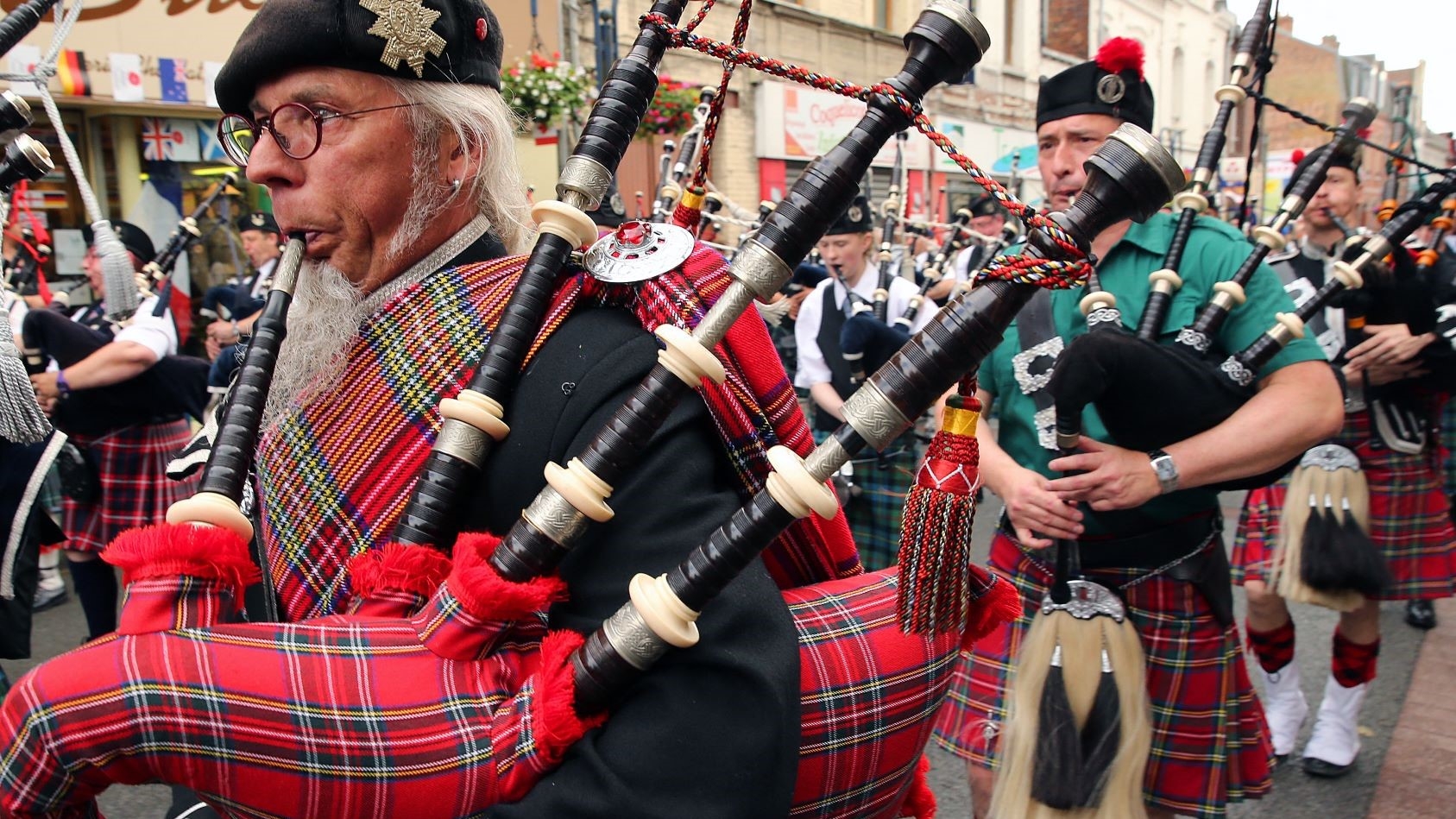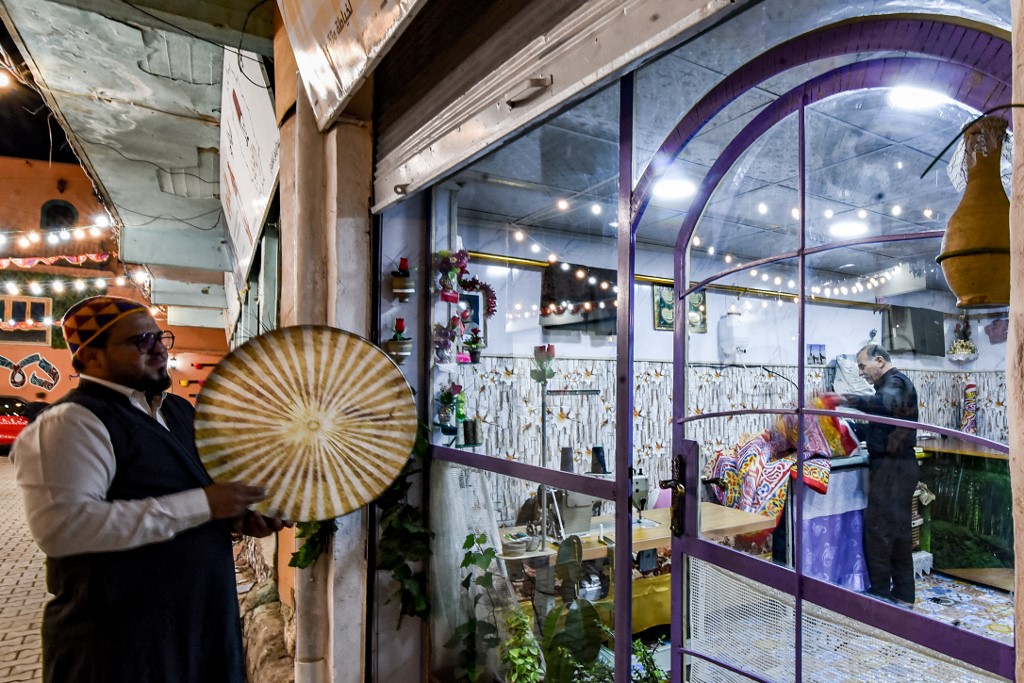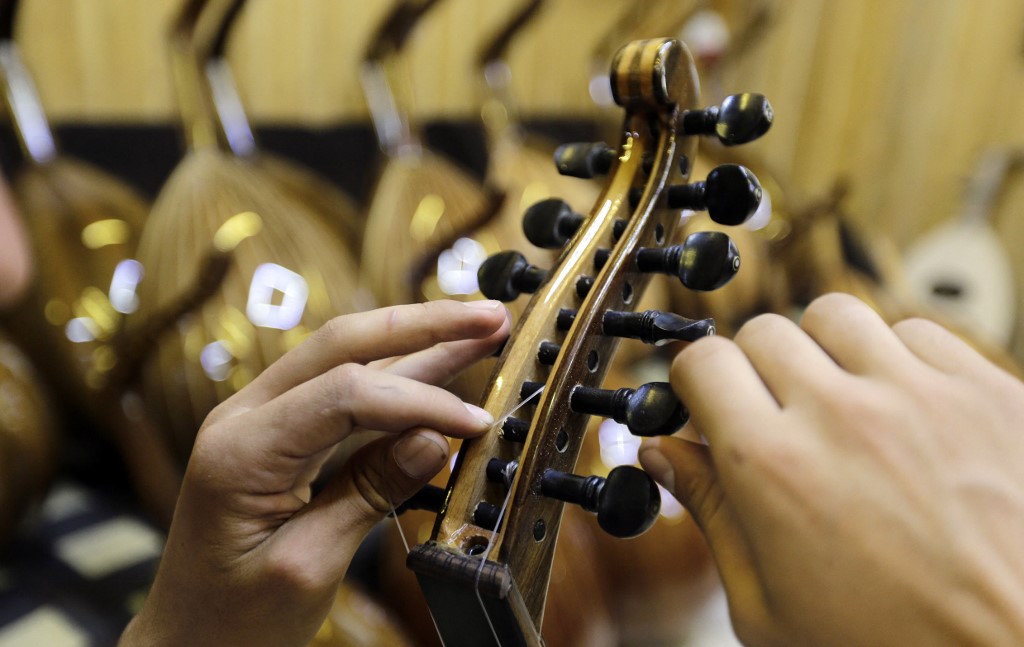Three instruments you didn’t know came from the Middle East

When it comes to musical pedigree, the Middle East's credentials are not in doubt, and the region's musical gamut encompasses everything from the orchestral songs of Umm Kulthum to the boisterous and raw sounds of the Mahraganat scene.
And by no means is this musical heritage something new or introduced by outsiders; music in the Middle East has a long history.
New MEE newsletter: Jerusalem Dispatch
Sign up to get the latest insights and analysis on Israel-Palestine, alongside Turkey Unpacked and other MEE newsletters
The world's oldest completely surviving musical composition, the first century CE Greek number the Seikilos Epitaph, was found at a graveyard in what is now Turkey.
Older still is the imaginatively named Hurrian Hymn Number Six, which dates back 3,500 years and was probably first played in an area that now covers the Near East and southern Turkey.
The oldest evidence of musical notation can also be found in the region, on Sumerian clay tablets that are around 6,000 years old.
Prior to Islam, poetry was often sung by nomads travelling long distances on the backs of camels, while after the establishment of the religion, Muslims incorporated instruments, such as percussion, as part of celebrations and preparations for battle.
A number of Islam's great scholars were also musicians, including Al-Farabi, a philosopher who wrote on musical theory, and Al-Ghazali, who wrote of the therapeutic benefits of music, while warning against indulging in listening to it too excessively.
"Therefore, amusement and entertainment are cures of the heart from exhaustion so it must accordingly be permissible," wrote the great Persian scholar.
Given all this, it's no surprise that a number of musical instruments were invented in the region.
Here, Middle East Eye takes a look at three you may be surprised to learn have their origins in the Middle East:
1. Bagpipes
Usually spotted alongside men wearing tartan and kilts, the bagpipe has become an integral part of Scottish culture.
A lot of theories exist as to how the instrument reached the country from its birthplace in the Middle East, but many historians believe that Roman invaders brought it with them after conquering parts of Britain in the first century CE.
The instrument was first recorded in Egypt, as early as 400 BCE, with early bagpipes being made of dog skin and bone.
Other accounts suggest that bagpipes were first used in Alacahoyuk in Anatolia at around 1000 BCE.
Historically, however, the bagpipes were an instrument associated with Egypt, with fifth century BCE Greek playwright Aristophanes saying "you pipers who are here from Thebes, with bone pipes blow the posterior of a dog".
In Greece, the instrument had the name "Piovala" and depictions of the instrument appeared in literature, as well as on later Roman coins.
Although bagpipes have taken on a number of forms since then, the principle has always stayed the same.
In order to work, the bag part of the instrument is used as an airtight reservoir to hold the air that is blown into it. The instrument also needs a chanter - the part of the bagpipe which creates the melody - and one or more drones, which are the wooden cylinders that tune the instrument.
In ancient Egypt, bagpipes were made from a single drone and chanter. A second drone was added around the 1500s, and a third in the 1700s, which paved the way for bagpipes as we know them today.
As the British Empire expanded, the bagpipe spread across the world, and part of the instrument's contemporary popularity could be down to the large number of pipers trained for military service in the world wars.
2. Tambourine
The tambourine is made from a drumhead stretched over a circular wooden frame and has circular metal disks which hit against each other, producing its signature clattering noise.
While there is debate on the exact origin of the instrument, there is general consensus on the idea that it first appeared in the Middle East.
Archaeologists have also unearthed small figures and Sumerian statues depicting women holding tambourines, dating as far back as 2000 BCE.
Ancient Egyptians and Assyrians also used the instrument in religious ceremonies, providing the beat for ritual dances.
A versatile percussion instrument - used even by Mozart - the tambourine also appears in some of the region's most sacred religious texts.
In the Book of Exodus, the older sister of Moses, Miriam, is described as playing the tambourine to celebrate the Israelites' escape from Egypt. Other mentions of the instrument in the Bible associate it with joyous occasions and celebrations.
The instrument then made its way over to Europe with returning Crusaders during the 13th century, where it was played mainly by women for evening entertainment.
Later in the 1800s, the instrument was used in military bands, particularly in the UK and USA during rallies and marches.
Given its simple design, the instrument has developed many variations over the centuries but the essential idea still remains true to its ancient Middle Eastern origins.
3. Lute
Slightly resembling a guitar, a lute is any string instrument with a curved, deep, round, and hollow back. Each string on the instrument is attached to a peg that allows the player to tighten or loosen the tension, creating a specific note.
The name "lute" is believed to derive from the Arabic word ‘al-Oud’ which refers to the wood used to make the instrument.
Very popular across the Middle East and North Africa to this day, the reference to wood in its name is to distinguish the lute from similar instruments made from animal skins.
Descending from Ancient Mesopotamia around 5,000 years ago, the versatile instrument, loved for its harmonic sound, made its way into Europe after the Muslim conquest of Spain in the eighth century.
By the 14th century onwards, it was popular enough to appear frequently in its various forms in paintings.
Its eventual fall from popularity came during the Renaissance with the rise of new stringed instruments, such as the guitar and bass.
Its soothing sound nevertheless remains a staple of Middle Eastern music and with the spread of streaming services on the Internet, the instrument is being re-introduced to European audiences.
This article is available in French on Middle East Eye French edition.
Middle East Eye delivers independent and unrivalled coverage and analysis of the Middle East, North Africa and beyond. To learn more about republishing this content and the associated fees, please fill out this form. More about MEE can be found here.









